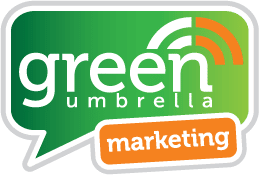Your Social Media Marketing Objectives and Goals

Your Social Media Marketing Objectives and Goals

Whether it’s because I’m presenting to a new (virtual) audience, or sitting down with a new social media management client for the first time, the one thing that is always, always, top of the agenda is the question “What do you want to get out of this?” The ‘this’ in that question being social media.
Whether you are an established business with a full marketing strategy or plan; or you’re just starting out and social media is the first tool in your marketing arsenal you’re looking to leverage – you need to be clear on what you are trying to achieve. The bad news is that if the answer is simply a single word answer of ‘Sales’, you’re setting yourself up for disappointment in the short term! (Ok – that’s a sweeping statement. There are some businesses that have the capability of overnight success where social media is concerned but they are few and far between!)
We have a core list of social media objectives we present to our clients, we talk through what each of these means and why they might be used. We ask our clients to choose three and then, together, we build our marketing strategy around those three goals.
Core Social Media Objectives
- To drive traffic back to your website
- Brand Awareness
- Client Retention
- Reputation Management
- Appear as an expert in your field
- To source new opportunities
- To nurture future client relationships
- To prepare for client meetings
- Reassurance marketing
- To keep an eye on industry trends
But what are the most common we’re asked for? What should you be choosing for your business? What makes the most sense? What has the most impact on revenue and sales?
Use Social Media To Drive Traffic To Your Website
Assuming you’re website has been designed to convert visitors into prospects, you’re more likely to make conversions on your website than you are on Facebook or LinkedIn! Creating content that takes your audience back to your website and offers them opportunities to engage with you means you can target them more effectively going forward through paid advertising strategies. It also means you can convert them into subscribers by asking them to share their details – meaning you build your email list.
Most websites have a contact page on their website with a form, or a subscribe for updates form where visitors can leave an email address. But in today’s world, we need to be smarter than that! Creating resources that can be accessed in a transactional way where email addresses are essentially ‘payment’ for the resource is an effective tactic. Think about what you are giving (or what you could give) that offers high value to your prospects.
If you’re not sure whether your website is currently working for you as a lead generation machine – it might be worth considering investing in a digital health check!
Prove You Are An Expert.
Using social media to sell a product is fairly easy – but if you’re B2B and selling a service, you don’t have anything tangible to share in your social media posts. Stating the social media objective of proving you are an expert in your field or creating thought leadership status sounds very grand and perhaps difficult to measure – but these are exceptionally valuable objectives.
Creating content that offers advice, guidance and opinion will help you achieve this. Don’t be afraid to use your voice and make predictions based on your years of experience. Asking the harder questions around something that is happening within your marketplace, or offering more detailed answers in the public domain allows you to build authority and trust.
The measurement of this comes in how many people reach out to you directly (Inbound leads). And also an increased response in the sales conversations you start.

Source New opportunities using social media marketing
This is the social media goal most people identify and read as the sales goal. But let’s think a bit deeper than pure sales. What does an opportunity look like in your business? I’d love to suggest you split this down a little and think of opportunities in three ways.
- Prospects – I talk about prospects, but you could call these ‘MQLs’. (Marketing qualified leads). These are the people we’re able to identify who have engaged with us enough we think they’re at a stage where we can comfortably ask them to discuss the prospect of spending money with us!
- Referrers – Who have my clients (or prospects) been engaging with who could also be using our services? Have we nurtured relationships beyond the sale to make sure we don’t have to keep asking for referrals, they appear organically because we’re top of mind with those in a position to refer us?
- Introducers – Where are you taking the opportunity to build relationships with other providers who serve your ideal client? If you’re doubling down your LinkedIn efforts, who are the people on LinkedIn you should be aligning with that would be able to make an introduction for you?
Not All Social Media Objectives Are created equal
I’ve dipped into the three most common objectives that our social media management clients choose to build their social media strategy around. They’re all robust, and you can see, without me going into detail, that some will be harder to measure than others.
The truth is, whatever your objectives, you need to have a way of measuring them to ensure success. In measuring them, you can make sure you’re also coming back to them consistently too, and correct your course where necessary. Over time, your objectives may change as your overarching business goals change, so review these objectives at least annually – but probably not more often than quarterly. (Too much change can hinder your results and is as bad as having no objectives at all!)

Christina Robinson is the Managing Director of Green Umbrella Marketing. She provides Social Media Training and Coaching for a range of clients throughout the UK.
Share this!

